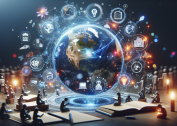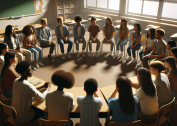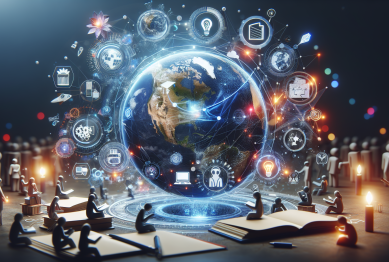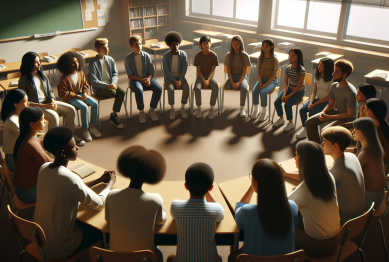The rise of remote work and digital infrastructure has given birth to a unique demographic: global nomads. These individuals work, learn, and live across countries, cultures, and time zones. Their lifestyle may seem unconventional, but it offers valuable lessons in flexibility, resilience, and cultural intelligence. Today, what global nomads teach about adaptability is becoming increasingly relevant—not just to travelers, but to educators, employers, and society at large.
As schools explore cross-cultural competencies and workplaces adopt hybrid models, the nomadic mindset is becoming a template for the kind of agile thinking needed in the modern world. This article unpacks how the experiences of global nomads offer a window into emerging societal trends, particularly in the domains of education, work, and personal development.
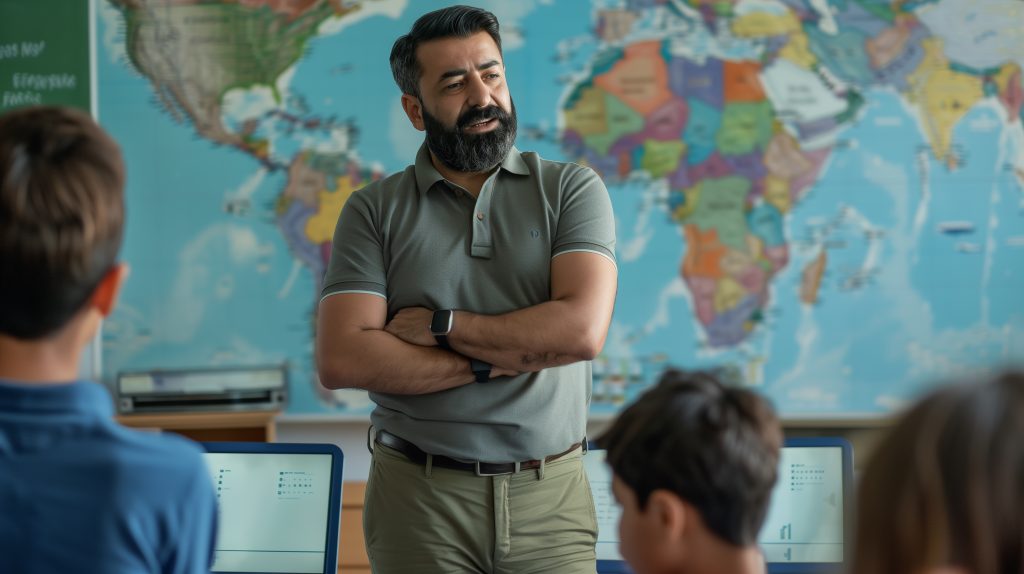
1. Adaptability Is Learned, Not Inherited
One of the most important insights global nomads offer is that adaptability isn’t an innate trait—it’s a skill cultivated through repeated exposure to change. Living in unfamiliar places forces nomads to adjust to new routines, learn local customs, and communicate across language barriers.
According to a study published in Frontiers in Psychology (2021), individuals with frequent intercultural experiences show higher levels of cognitive flexibility, tolerance for ambiguity, and openness to new perspectives. These are all key components of adaptability and emotional intelligence.
How This Applies to Education:
-
Schools are starting to value adaptability as a core skill alongside literacy and numeracy.
-
Project-based learning, study-abroad programs, and language immersion courses are being prioritized to simulate similar growth environments.
-
Teachers are incorporating global case studies and virtual exchanges to encourage students to think beyond local contexts.
In short, global nomads prove that adaptability can be taught through structure, reflection, and experiential learning.
2. Uncertainty Doesn’t Have to Be Paralyzing
Nomadic life is inherently uncertain. Visas expire, housing falls through, internet fails. Yet, seasoned nomads develop coping strategies that help them stay productive and grounded despite the unknown. They learn to operate without rigid plans, relying instead on systems that allow for fluidity.
For instance, many use asynchronous work schedules, modular housing setups, and time zone management tools like World Time Buddy or Google Calendar integrations to maintain stability in chaos.
Societal Takeaway:
-
Traditional systems—education, business, even governance—are often built on assumptions of predictability.
-
However, the pandemic revealed the fragility of these systems. Remote learning failures, disrupted supply chains, and policy confusion created a collective moment of uncertainty.
-
Nomads demonstrate that systems can thrive with built-in flexibility. Companies and institutions that adopt this mindset are better prepared for future disruptions.
3. Cultural Agility Is an Asset, Not a Luxury
Global nomads constantly switch cultural settings—negotiating meals in one language, attending meetings in another, and navigating etiquette in a third. As a result, they build cultural agility: the ability to recognize, respect, and adapt to different cultural norms.
This skill is increasingly valued in both education and the workplace. A McKinsey report (2023) highlights that teams with cross-cultural competence outperform others in global collaboration and market entry success. Similarly, schools that foster intercultural awareness report stronger student engagement and social development.
How to Build Cultural Agility:
-
Introduce multicultural literature and global history into school curricula.
-
Encourage bilingualism or multilingual education.
-
Promote international virtual team projects or pen-pal programs.
-
Normalize discussions around bias, privilege, and cultural humility.
Cultural agility is no longer optional in an interconnected world—it’s essential. Global nomads show what it looks like in practice.
4. Self-Directed Learning Becomes a Lifestyle
For many nomads, access to formal education is limited. They turn to online platforms, mentorships, and peer communities to develop skills. This practice of self-directed, lifelong learning aligns with broader shifts in how society views education.
The rise of micro-credentials, online certifications, and peer-to-peer learning platforms such as Coursera, Skillshare, and MasterClass reflects this movement. According to HolonIQ’s 2024 report, over 1 billion learners worldwide are expected to access digital learning services by 2030.
Lessons for Educators:
-
Formal institutions should offer hybrid and modular learning options.
-
Students should be taught how to design their own learning paths based on interest and need.
-
Feedback mechanisms should emphasize growth, not just performance.
Nomads rely on learning to survive and thrive. As education evolves, so should the expectation that students take an active role in their own growth.
5. Digital Infrastructure Enables Global Learning Ecosystems
Nomads depend on stable internet, secure cloud storage, and collaborative platforms like Zoom, Slack, and Notion. These tools are not just conveniences—they’re essential to maintaining productivity, social networks, and ongoing learning.
As society becomes increasingly digitized, the line between local and global fades. A student in Nairobi can attend the same coding bootcamp as one in Berlin. A worker in Lisbon can collaborate in real time with a team in Buenos Aires.
This shift emphasizes the importance of equitable access to digital tools and reliable infrastructure. According to the World Bank, 37% of the global population still lacks internet access as of 2023. Bridging this gap is critical for participation in global education and employment systems.
6. Community Building Looks Different Across Borders
Contrary to the stereotype of loneliness, many global nomads maintain strong social connections. However, their version of “community” looks different. They form digital tribes, meet through coworking hubs, and stay in contact through WhatsApp groups and newsletters.
These flexible community models are influencing how institutions think about belonging. Schools, for example, are exploring hybrid clubs, virtual mentorship programs, and student-led media to keep learners connected—especially in remote or hybrid settings.
Nomads show that community can be mobile, digital, and fluid, yet still meaningful.
7. Values Shift Toward Autonomy and Purpose
Many global nomads prioritize autonomy, meaningful work, and lifestyle alignment over traditional success markers like salary or promotions. This mindset is spreading, particularly among Gen Z and younger millennials.
Surveys by Deloitte and Pew Research show that younger professionals value work-life balance, travel opportunities, and flexible schedules over fixed titles or office prestige. Educational institutions are beginning to reflect these values by offering purpose-driven programs, gap year options, and experiential learning paths.
Global nomads exemplify a life where freedom, growth, and contribution guide choices. These values may soon become more mainstream than marginal.
Conclusion
Global nomads may be few in number, but their way of life offers profound insight into how to thrive in an unpredictable world. What global nomads teach about adaptability is that the skill isn’t reserved for adventurers—it’s essential for anyone navigating a rapidly changing society.
They model how to approach uncertainty with creativity, how to build cross-cultural understanding, and how to learn without boundaries. As educators, employers, and institutions respond to emerging global challenges, there’s real value in studying those already living outside the traditional mold.
Adaptability isn’t just a survival tool—it’s a strategy for sustainable growth in a world that won’t stop moving.
References
- TCK adjustment and intercultural flexibility – Frontiers in Psychology (2022) Frontiers
- Cultural agility & performance in teams – McKinsey and MoldStud
- TCK traits: resilience, sensitivity – Wikipedia on Third Culture Kids Reuters



